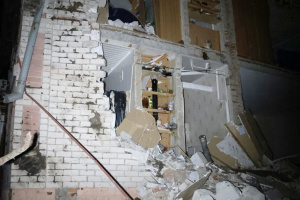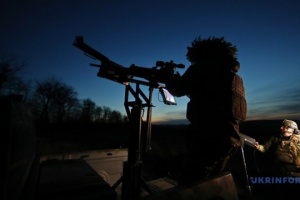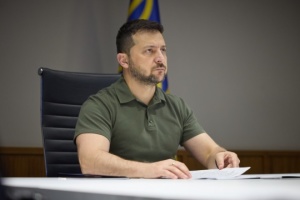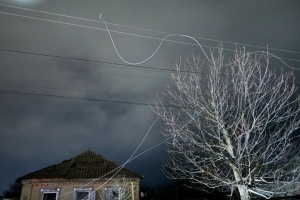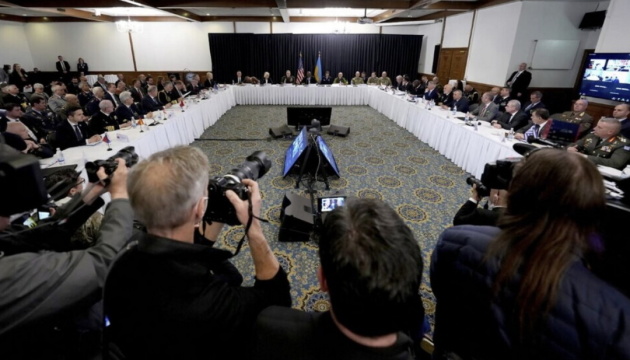
Second Wind for Ramstein. Focus on Speedy Decision-Making and Implementation
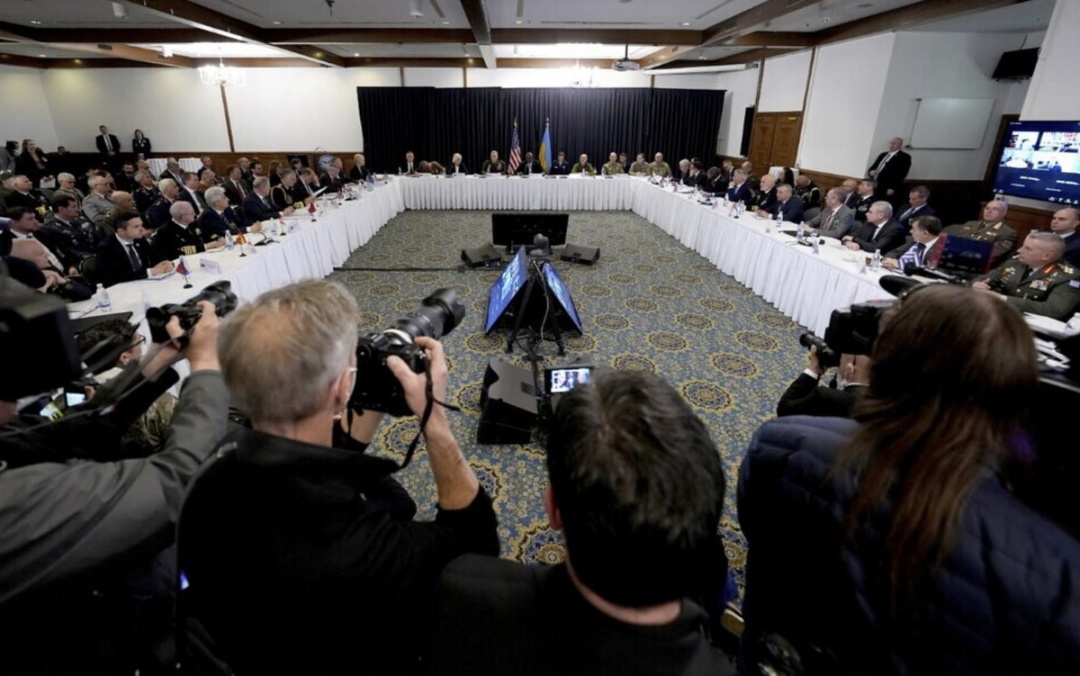
The Ukraine Defense Contact Group (known as Ramstein Group) on this April 22 turned two years old. It is symbolic that these days our allies, heads of defense departments from 50 countries from across the world gathered for a new meeting - the twenty-first in a row, which was held online.
For the modern world and a modern a war especially, two years is a distance of cosmic scale. We pay tribute and are very grateful to Ramstein for the vital assistance they are providing to Ukraine amid war. But now it is becoming obvious that the format needs to be updated and upgraded with improvements fed in from the acquired experience. This is, first and foremost, about the speed of work by analytical teams, and therefore the speed of decision making and implementation processes.
This is, of course, far from all there is to say 21-Ramstein.
What important statements were made, what weapons were promised to be provided to Ukraine before and during the Ramstein meeting?
Let's ask experts how they generally view 21-Ramstein based on what has been achieved over the two years since that platform was created; how effective it is, and whether it will have a "second wind" after the USA finally has returned to the "big game"?
21-Ramstein format meeting (Photo: Ministry of Defense of Ukraine)
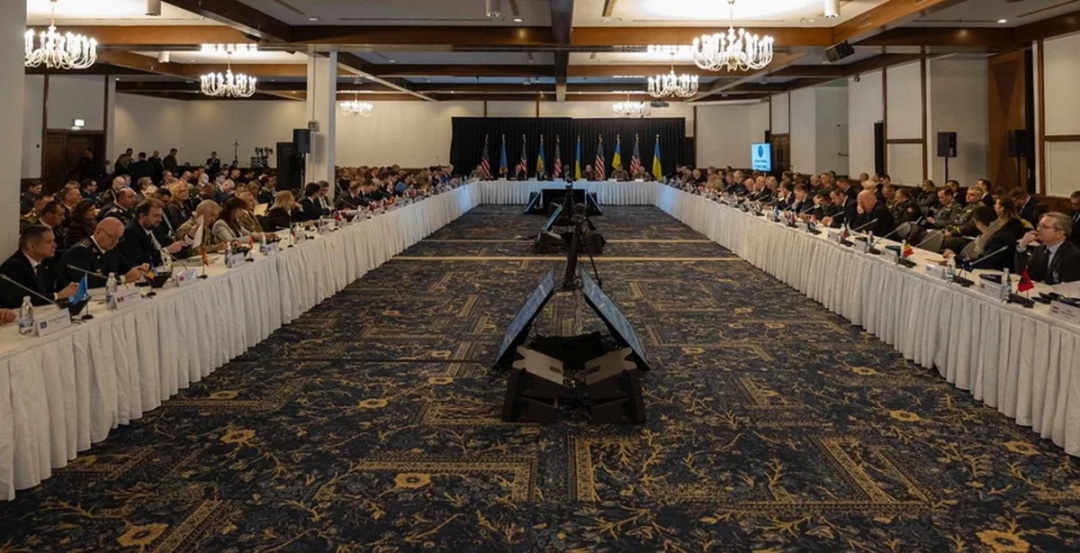
Two years of Ramstein: from buildup to big breakthroughs and routine. Are there chances of a "second wind"?
In a comment to Ukrinform, diplomat Vadym Tryukhan was the first to mention how in the first weeks of Russia's all-out invasion we managed not only to resist, but even to make the enemy withdraw from Kyiv region, Zhytomyr region, Chernihiv region, and Sumy region.
"Two factors helped us succeeded. The first was that the Russian Federation had totally underestimated the capabilities and the willpower the Ukrainian people hold within. They entered Ukraine with a supply of food and fuel for three days, being fully confident they would hold a "victory parade" on Khreshchatyk in March. The second is an incredibly high mobilization of the Ukrainian society, where each and every citizen, literally, from the old to the young stood up to destroy the enemy," the expert says.
But then the war began to move into a new phase.
"The Russians, having realized they had "slipped up", launched a military mobilization campaign. That was when assistance from external partners was needed, because Ukraine would otherwise not be able to survive. The creation of the Ramstein Format at the end of April 2022 therefore became timely and extremely important. Hence, the key conclusion is that Ramstein had come as kind of a "lifeline" for our country; it had become critically important for strengthening our resilience and the ability to face up to a potent adversary such as Russia who has continued in this role for two years now", Mr. Tryukhan goes on to note.
Of course, he continues, one can find a lot of weaknesses in performance of this Format, but it is still working, and due to a large degree to U.S. leadership.
"For these two years, it was the USA who has moderated and managed the Format’s activities, even despite the fact that, in October last year, problems unexpectedly arose in the States themselves, in particular, with respect to the provision of aid for Ukraine. But without this Format in place, Ukraine would hardly have survived. Ramstein exists and that’s what matters most. Ramstein, I think, has not yet said its last word. And what’s important in this context is that the gathering is chaired by the American party at a time when the U.S. had finally unblocked its defense aid for Ukraine," says the diplomat.
The Ramstein Format seems to have acquired a second wind, and it won’t be long before we all see the result.
"During the last seven months, it became obvious to everyone that the role the United States has played in this Format cannot be replaced by anything else, at least in short- and medium-term perspectives. So it seems to me that the key leaders of the world’s major democracies have realized that the Russians have no intention to stop, that they, seeing the weakness of the West, will increase their efforts in an attempt not only to destroy Ukraine, but to destabilize the world as a whole. And then time will come for these key leaders to begin paying more attention to preparations for a potential direct confrontation with the Russian Federation", Vadym Tryukhan emphasizes.
Over the past two to three months, multiple statements have been made confirming that the West is fully aware of this probability. The only difference seen in these statements is about the timing: some believe this will happen within the next 2-3 years, others in 5-7 years. But this can actually happen at any time.
"Even tomorrow, after some or other provocation the Russian Federation can afford, Poland or Romania will have to respond. I therefore believe that, from this second-anniversary meeting, we will see Ramstein not only acquiring a "second wind", but also starting a new life in general. Ramstein is just beginning its life; so everything is still ahead of it," Vadym Tryukhan says.
And here is how Oleksandr Kovalenko, a military observer with the "Information Resistance" Group views it. "Ramstein, which was created exactly two years ago, has with each new meeting been increasing the number of donor countries helping our state. Simultaneously, the range of the armaments provided to us has been growing and expanding. Our countries were gradually becoming less fearful and more decisive, and the taboos were being lifted... Unlike the past, where Eastern Europe, particularly Poland began by supplying Ukraine with obsolete Soviet-era T-72M1 tanks, this was later followed by transfers of modern Western-made heavy armored vehicles such as Leopard-2, Challenger-2, and Abrams. This is true also for air defense equipment and artillery gun systems; M-777 howitzers were the first to come, followed by Himars MLRS and others."
Nowadays, there is open talk about supplies of ATACMS long-range missiles, and F-16 fighters are on the way.
"Has Rammstein spent its potential?" No it hasn't. These two years have brought us to a phase where Ramstein no longer adds new weapons types to the range of the weapons it offers Ukraine. The partners have already given us, or will give soon all the weapons types that potentially could cause war to escalate. Ramstein has become routine to some extent, where expanding supplies by adding new weapons types is no longer talked about, except new brands of the types already being supplied. For example, if, in addition to the American F-16s, we are given the French Mirage 2000 or Rafale, or the Swedish Gripen, it will be a really valuable and important addition; but these are all fighters, whereas we need other aircraft types as well.”, Mr Kovalenko says.
But what is important now is not just weapons; safe and secure routes of supply and the speed of deliveries are gaining in importance. The battlefield can no longer wait for this to be the case. The expert comments on this thus: "Ramstein is not about weapons only. There are discussions going on also about improving logistics, simplifying various bureaucratic procedures, and solving political, social, and economic issues."
Yevhen Savisko, an expert in politics believes that the Ramstein Format is far from perfect, but not the worst.
"Over these two years, the Format has grown and expanded, its functions have been modernized, the level and scope of the range of the weapons and ammunition supplied have increased, from small arms ammunition and Javelins to air defense systems, aircraft and ships, he says.
Our allies have finally begun to appreciate that Ukraine is defending the whole civilized world, and that its hypothetical defeat would be a defeat of all the reasonable people in the world.
"The delays in weapons supplies from the USA, along with Russia’s increased appetites reveal the need to have in place a vigorous, effective mechanism to ensure the assistance we are receiving from partners other than the U.S. is continual and rapid. For this to happen, it is necessary to get Ramstein’s working principles upgraded and updated, to establish new approaches to relations between the participating states and Ukraine", Mr. Savisko emphasizes.
Here are comments by political analyst, Oleh Posternak: "Ramstein was -- and remains -- a coordinating format for the Western partners supporting Ukraine's defense needs, and Ramstein has been doing perfectly well with these functions. It has another significant geopolitical role; that is, to get in place an effective mechanism to ensure Western solidarity with Ukraine take deeper root, to equalize the roles of those countries that might have doubts or a certain amount of fear in respect to assisting Ukraine. Ramstein has become sort of a tool to defeat fear of Russia."
Ramstein’s effectiveness, the analyst goes on to note, is determined by the current level of Ukraine's needs, that is, the speed of response to requests. It often happened previously that the pace of arms supplies was going on a sine wave, accompanied at times by large aid packages, and at times by modest or intermediate ones. This trend must be overcome.
21-Ramstein. Outcome and results
Important statements
Ukrainian President, Volodymyr Zelensky: "...there is always a certain amount of time going between the political decisions the partners make, as was the vote in Congress, for example, and the actual delivery, and it matters for us that this time lag is the shortest possible".
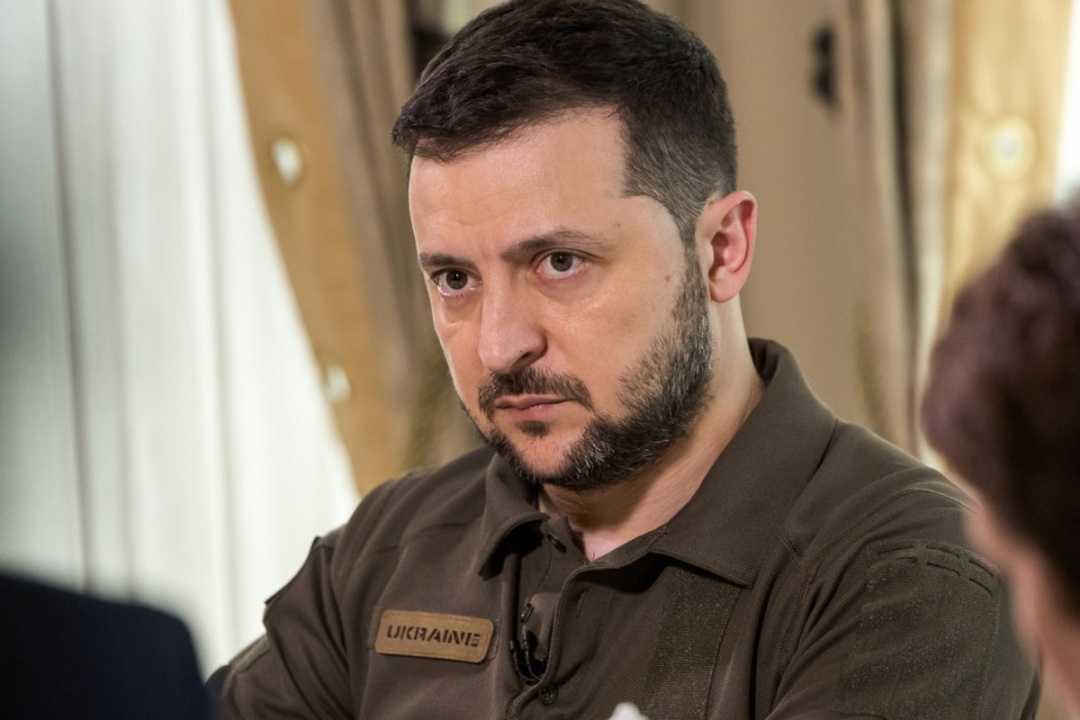
President Zelensky addressed the participants in the 21-Ramstein Format meeting, gathering ministers of defense and military commanders from partner countries. The President warned that the Russian occupiers are preparing for a new offensive operation, and for Ukraine to be able to get it thwarted, it needs to have appropriate weapons for this, and in good time. We have not received these weapons yet; we must emphasize that there is always a certain amount of time going between the political decisions the partners make, as was the vote in Congress, in particular, and the actual delivery, and it matters for us that this time lag is the shortest possible".
The President of Ukraine also said:
"My friends, please don't forget what you are deciding. This is not just about the supply of weapons; you are deciding the fate of a world that will either live by the rules we all recognize or be left at the mercy of those who resort to brutal violence. At what stage is the war now? After two years, the answer is obvious," Mr. Zelensky said in opening remarks to the 21st meeting of the Ukraine Defense Contact Group, also known as Ramstein group.
During the six months while Ukraine was waiting for U.S. aid, the Russian army had managed to seize the initiative on the battlefield. But now the Ukrainian forces are not only able to stabilize the frontline, they can fight against Russia’s recent gains in the east.
What Ukraine urgently needs now:
- long-range armaments to ensure there is no safe place for the enemy on the Ukrainian territory;
- air defense systems, including a minimum of seven Patriot air defense systems, to shoot down Russian airplanes and keep them away from the Ukrainian border;
- artillery gun systems to disrupt Russia’s planned offensive operation and to support active operations by own forces.
Zelensky also urged the allies to "pay maximum attention to the production of weapons - both in their home countries and in Ukraine."
"Ukraine now has the potential for the production of drones among other things, but that far exceeds our financial abilities. The same goes true for electronic warfare systems, and the same concerns many industries in your home countries. We need standing orders to provide our defense industries with sustained business," he emphasized.
The Armed Forces of Ukraine are now establishing new brigades that need to be supplied with weapons, because, as the President put it, "even the best soldiers will not be able to change the course of the war if they don’t have the weapons."
Austin: “The first F-16s will arrive in Ukraine with trained pilots and maintenance personnel"
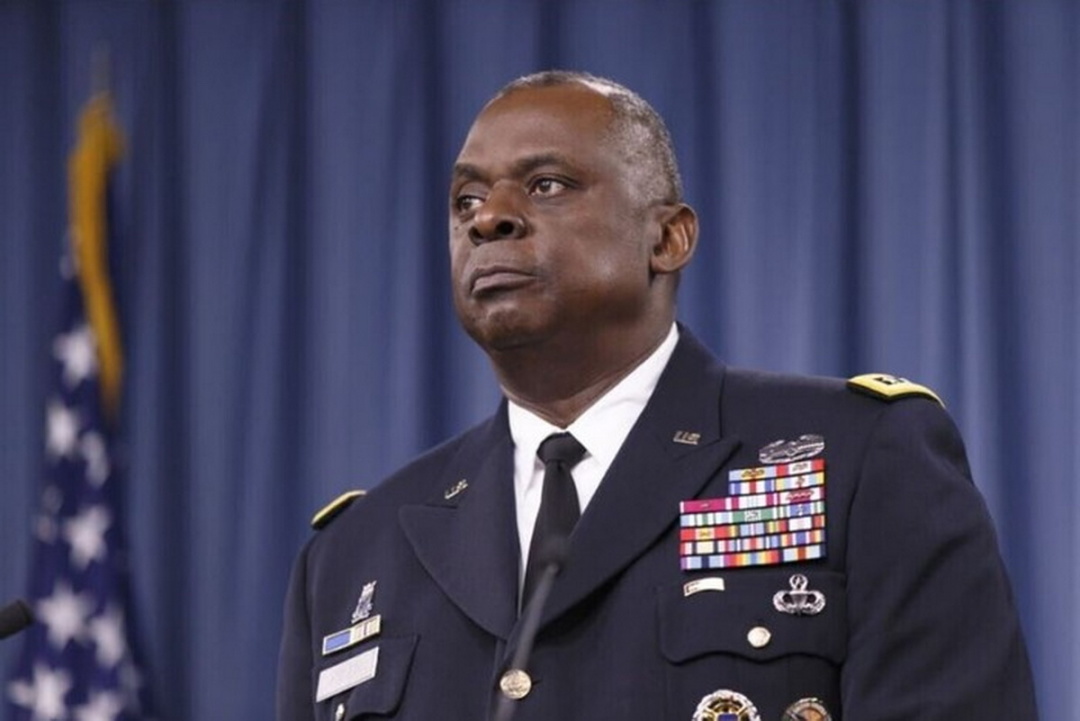
Strengthening Ukrainian air defense systems is a top priority at, said Pentagon chief Lloyd Austin in opening remarks at the 21-Ramstein meeting.
He said allies would focus specifically on strengthening Ukrainian air defense capabilities by providing it with additional numbers of air defense systems, rockets and missiles, artillery guns and ammunition, and, also, armored fighting vehicles to enable Ukraine to defend its citizens and reclaim territories currently under Russian control.
He also added that initial deliveries of F-16 fighter jets are expected to begin in 2024.
"This year, more squadrons of donated F-16s will begin arriving in Ukraine, along with pilots and maintenance personnel trained by members of this Contact Group," Austin said. And allies have committed to provide more than 3,000 units of armored equipment, including more than 800 main battle tanks, the Pentagon chief added.
What’s on the immediate aid package for Ukraine
At 21-Ramstein, Lloyd Austin announced that the U.S. has earmarked $1 billion in aid for Ukraine. The package includes HIMARS missiles, artillery rounds, and air defense systems among other weapons. This is the second package the U.S. approved in a matter of days.
The first, announced on 24 April, includes:
- RIM-7 and AIM-9M missiles used in air defense systems, including Soviet-era systems modified for this purpose under the FrankenSAM program;
- Stinger and Avanger MANPADS rockets;
- an additional amount of ammunition for HIMARS;
- 155-mm (including cluster variants) and 105-mm artillery shells; 60-mm mortar rounds;
- ATGM TOW, Javelin and AT-4 antitank grenade launchers;
- Bradley infantry fighting vehicles, unnamed armored vehicles, HMMWVs and an undisclosed number of logistical support vehicles;
- high-precision air-launched missiles; airfield support equipment;
landmines, mine detection and disposal equipment, night vision devices, machine gun rounds and other ammunition, repair parts, etc.
Spain, too, has committed to supply Ukraine with an amount of Patriot air defense missiles.
But that's not all.
Great Britain on April 23 announced €580 million in new military aid package for Ukraine. The package includes:
- 60 boats, including raiding and diving boats, as well as naval cannons;
- more than 1,600 strike and anti-aircraft missiles; an additional amount of long-range Storm Shadow missiles;
- more than 400 pieces of equipment, including 160 mine-resistant ambush protected (MRAP) Husky vehicles, 162 armored vehicles and 78 all-terrain vehicles;
- almost 4 million rounds of small arms ammo.
France earlier announced it would provide additional Aster-30 missiles for use with the SAMP-T air defense system, which, like the Patriot, is capable of defeating ballistic missiles, including the Russian Kinzhal.
That’s what has become known as of this writing. Ukraine is going to receive lots of weapons, modern and highly capable. What matters most now is that the weapons arrive in Ukraine as soon as possible. Hence the key conclusion: the speed the partners will send the weapons to Ukraine is what will decide what Ukraine will be able to achieve on the battlefield this year.
Myroslav Liskovych. Kyiv

